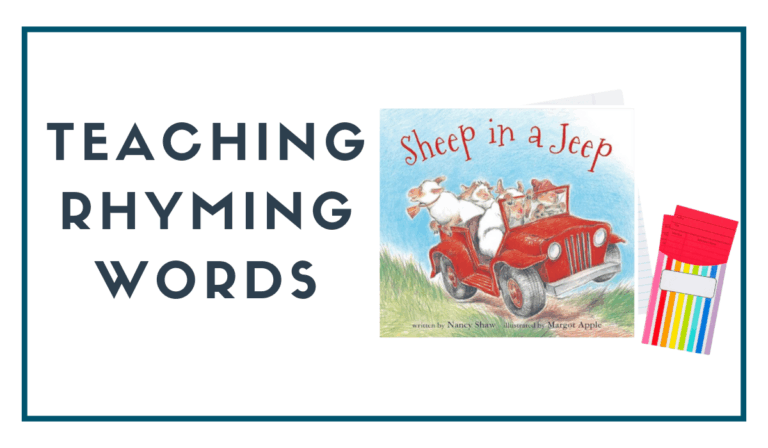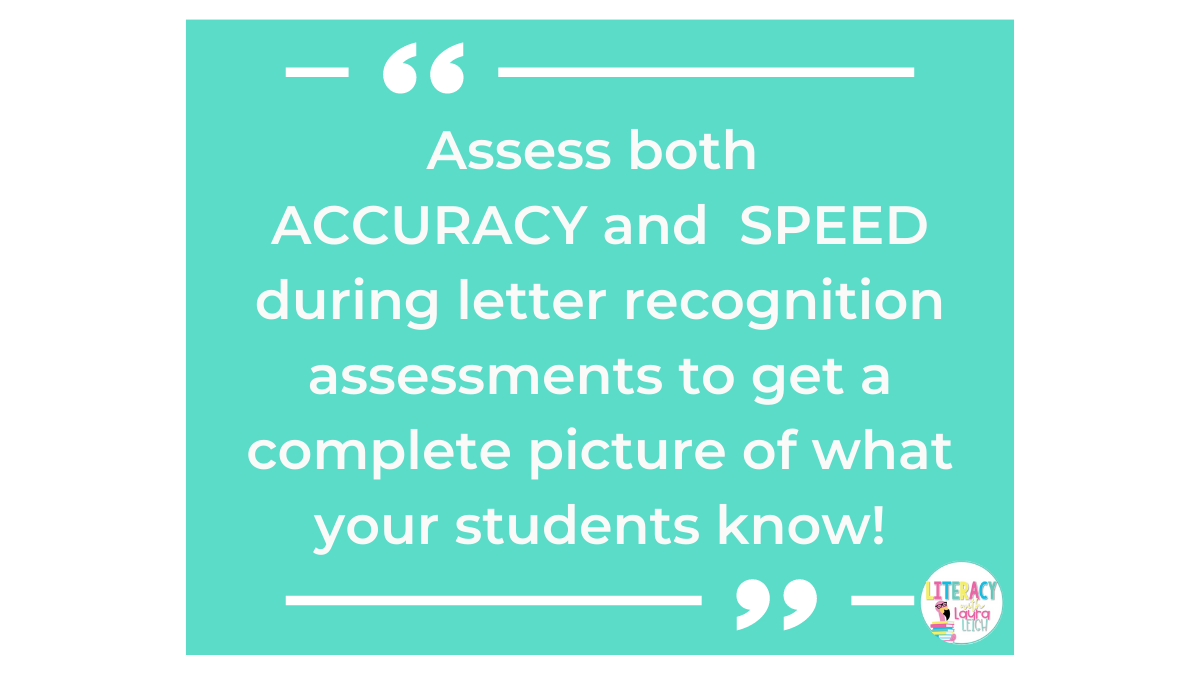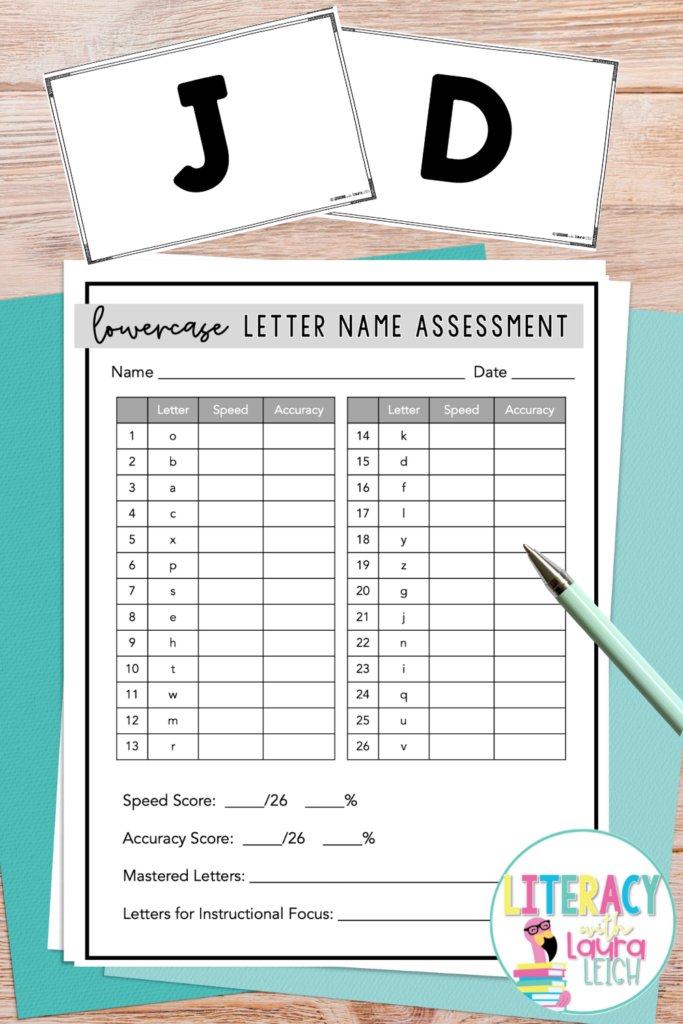
It’s the beginning of your homeschool year, and you’re eager to see how well your child knows their letters. You sit down together with a letter recognition assessment in hand, ready to gauge their progress. Your child eagerly points to familiar letters, but some are trickier than others.
Kate knows the letter D. Check.
But wait! Did you know that you should be assessing more than just whether she knows the letter name? That’s right; we need to assess both accuracy and speed during our letter recognition assessments!

You can use a simple letter recognition assessment to gather this data! You’ll want to individually assess child’s knowledge of both upper- and lowercase letters. These assessments should determine whether your child can identify the letter, an accuracy check, and if they do it automatically, a speed check. When I assess my child, I use a form with columns for both speed and accuracy to have two separate scores. If thy daughter can name the letter within three seconds, she would receive a check in the speed column. If she provided the letter name correctly, even after 3 seconds, she received a check in the accuracy column.
BONUS: The letters are presented in the order they are typically learned (Phillips et al., 2012, Piasta, 2014) so that the letter recognition assessment progresses from simple to more complex.

Now that you have TWO scores, each provides different yet useful information. The accuracy score tells you which letters are unknown, and the speed score tells you which letters need more instruction and practice because of mastery issues.
You’ll use this data to modify your homeschool lessons and tailor learning activities based on your child’s specific letter knowledge needs. You can spend more time on the letters they don’t know and less on the ones they do know. Don’t treat all letters equally!

After completing the letter recognition assessments, I use my editable letter recognition intervention, which allows me to tailor which letters I want to target during instruction. I can type in the target letters and it creates the pages I need.
This letter recognition intervention is perfect for homeschool instruction. It incorporates explicit, multisensory instruction to ensure your students can rapidly and accurately identify all uppercase letters.
I also use the information to inform which letters to focus on during our daily alphabet arc activity. Not sure what an alphabet arc is? Check out my blog post, “3 Alphabet Arc Activities that Boost Letter Recognition (Fast)” for all you need to know. Interested in trying an alphabet arc in your classroom? Grab my FREE alphabet arc HERE!
Many children who enter kindergarten can identify some of the letters. (The average number is 14 for those who love a research-based statistic!). However, being able to say the names of the letters is not the same as “knowing” the letters.
When children can recognize and name the letters of the alphabet accurately and automatically, they have a foundation for learning the alphabetic principle and learning to read. (Adams, 1994; Ehri, 2005)
Being able to name and quickly recognize all letters is a critical step in learning to read. Adams (1990) noted that children who can identify letters with speed and accuracy have an easier time learning about the sounds associated with letters than those struggling with alphabet recognition.
You might need to try an alphabet recognition assessment if you:
And after you complete those letter recognition assessments check out these blog posts to teach the ABC’s like a rockstar!
7 Simple + Fun Activites that Improve Letter Recognition in 5 Minutes
3 Creative Ways to Use the Alphabet Song to Teach Letter Recognition
And don’t forgot to grab your FREE ALPHABET ARC!
